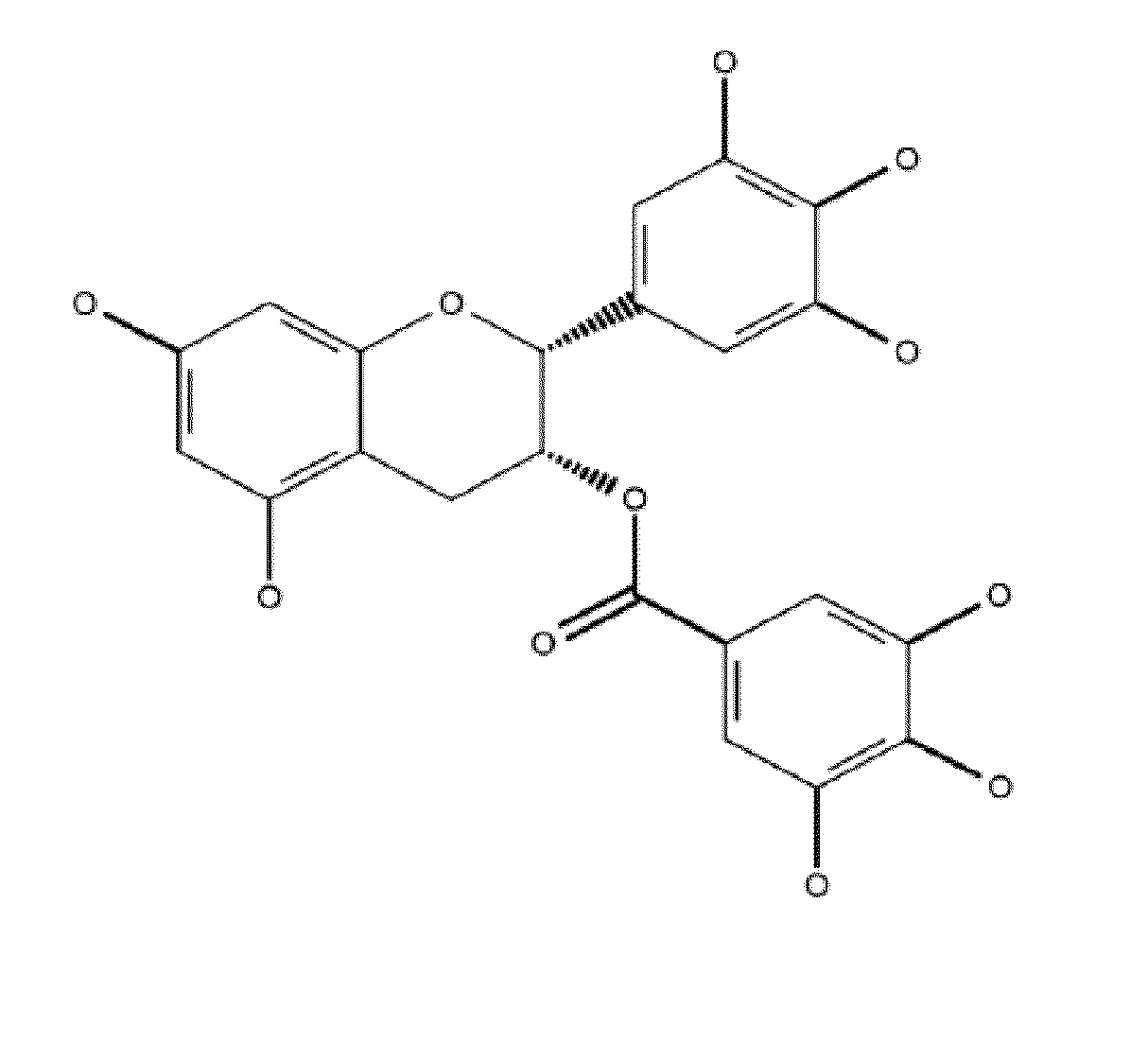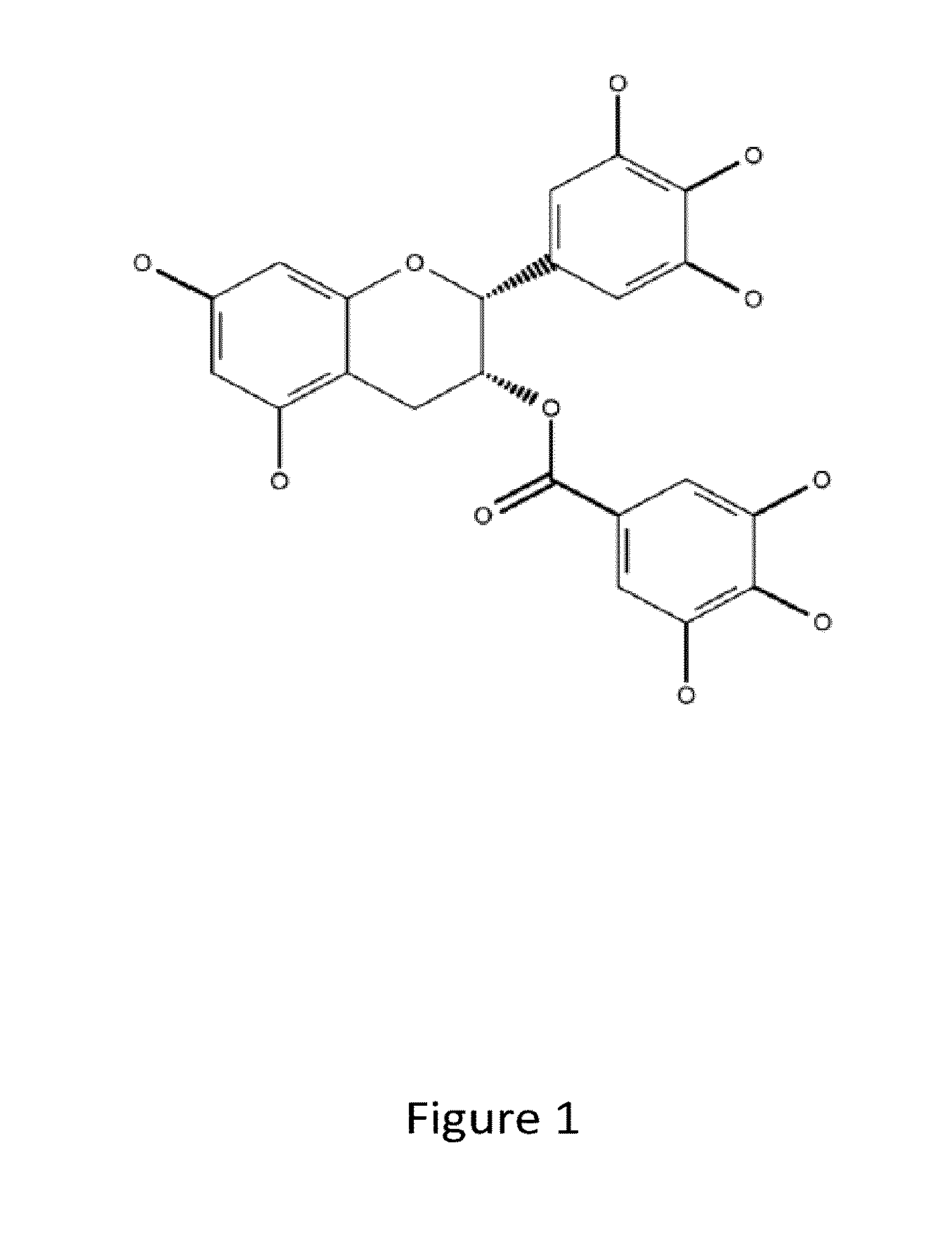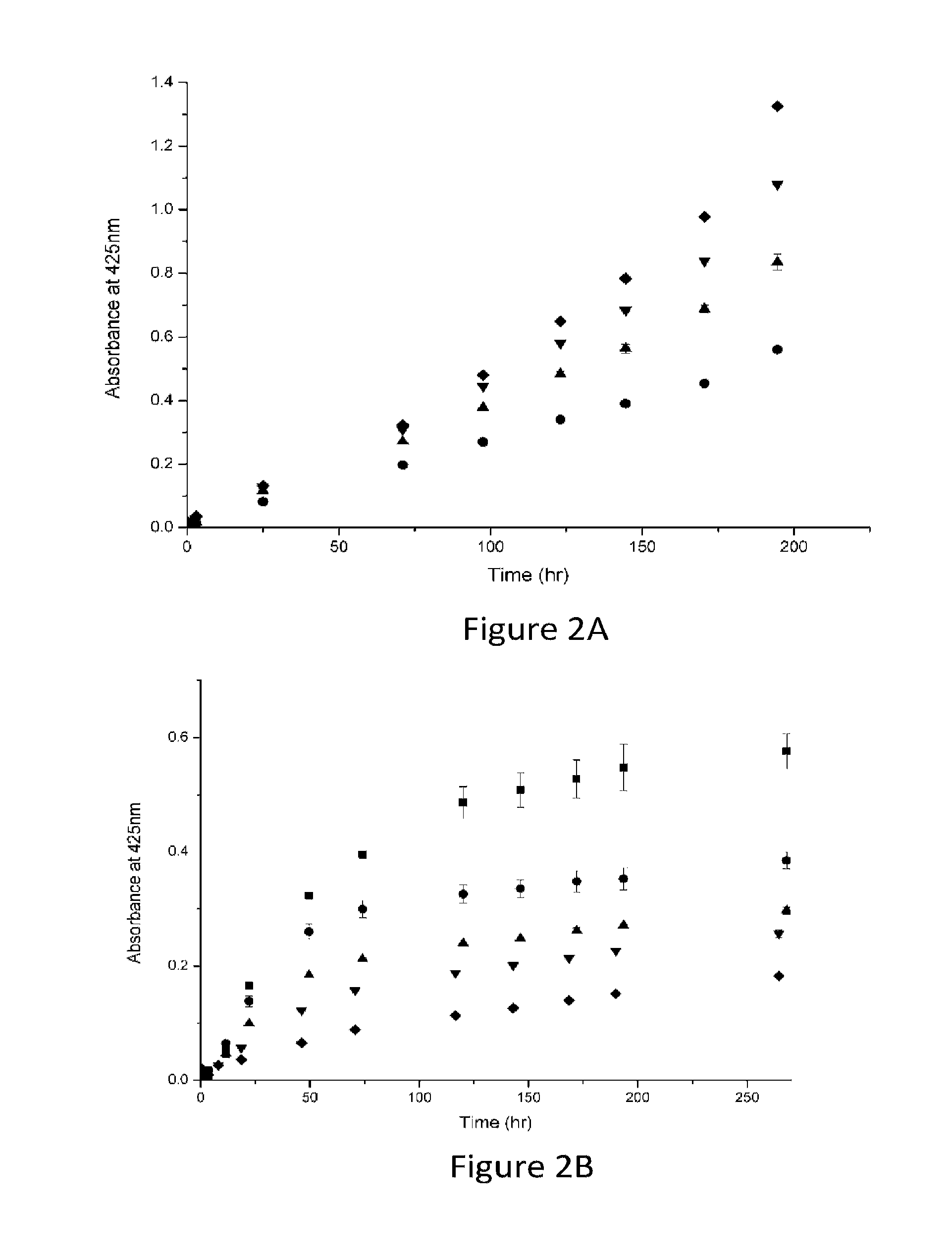Denatured lactoglobulin and polyphenol coassemblies
a technology of lactoglobulin and coassemblies, which is applied in the direction of plasma/lactoglobulins, drug compositions, metabolism disorders, etc., can solve the problems of difficult encapsulation of water soluble compounds such as catechins, and inability to meet food products, etc., and achieves less bitterness, less astringent, and high colloidal stability of compositions
- Summary
- Abstract
- Description
- Claims
- Application Information
AI Technical Summary
Benefits of technology
Problems solved by technology
Method used
Image
Examples
example 1
Entrapment of EGCG by Co-Assembly with Preheated β-Lg
[0115]To protect EGCG against oxidative deterioration, a new method of nanoentrapment of EGCG within co-assembled β-Lg-EGCG nanoparticles was developed.
[0116]Without wishing to be bound by any theory or mechanism, it was hypothesized that denatured β-Lg would serve as a good protector, both because it is a mild antioxidant and because EGCG has good affinity to proteins, particularly proteins with open structures, like saliva, gelatin and casein. Thus, unfolding of β-Lg would improve its binding affinity to EGCG. Moreover, β-Lg can form nanoaggregates upon heating at low ionic strength and pH not close to the pI (5.35), due to intermolecular electrostatic repulsion, which prevents extensive aggregation and gelation.
[0117]Beta-lg solution was prepared in a buffer solution (30 mM phosphate buffered solution; PBS, target pH=7) containing 0.02% sodium azide (as preservative for experimental use only) made by dissolving 0.234 gr NaH2PO4...
example 2
Binding of EGCG to Native and to Heat Denatured β-Lg
[0120]The binding and co-assembly of EGCG and β-Lg at different conditions, thermal treatments, concentrations and ratios, was studied. Optimal results were obtained following a 75° C., 20 min heat treatment of the protein solution (pH˜6.9, in a low ionic strength buffer), followed by addition of acid-buffered EGCG (pH˜2.5), vortexing for 20 sec, and allowing the composition to cool to room temperature.
[0121]Intrinsic protein fluorescence can be used to study binding properties and structural transitions of proteins. This technique was applied to study the binding of various molecules to β-Lg and was also used to study EGCG interaction with different proteins. Fluorescence spectroscopy was applied herein to compare the binding affinities of EGCG to native β-LG, and after preheating the protein to 75° C. or 85° C. for 20 minutes. It is based on exciting at 280 nm the Trp and Tyr residues of bovine β-Lg (bovine β-Lg contains two Trp ...
example 3
Evaluating Binding Constant by the Stern-Volmer Equation
[0132]Fluorescence quenching is often described by the Stern-Volmer equation (3):
F0F=1-KSV*[Q](3)
where F0 and F are the fluorescence intensities before and after the addition of the quencher, respectively, KSV is the Stern-Volmer quenching constant and [Q] is the concentration of the quencher. A linear Stern-Volmer plot is generally indicative of a single class of fluorophores, all equally accessible to the quencher. Without being bound to any theory or mechanism, it is speculated that a Stern-Volmer plot that curves towards the x-axis may indicate the existence of more than one fluorophore population, of which at least one population is not accessible to the quencher. This theory is logical in a globular protein of 6 fluorophores. As shown in FIG. 6B, the Stern-Volmer plot of the quenching of preheated β-Lg by EGCG (β-Lg concentration=2*10−6M; pH 6.86) shows a significant shift from linearity, indicating the existence of a pop...
PUM
| Property | Measurement | Unit |
|---|---|---|
| particle size | aaaaa | aaaaa |
| volume-weighted average particle size | aaaaa | aaaaa |
| temperature | aaaaa | aaaaa |
Abstract
Description
Claims
Application Information
 Login to View More
Login to View More - R&D
- Intellectual Property
- Life Sciences
- Materials
- Tech Scout
- Unparalleled Data Quality
- Higher Quality Content
- 60% Fewer Hallucinations
Browse by: Latest US Patents, China's latest patents, Technical Efficacy Thesaurus, Application Domain, Technology Topic, Popular Technical Reports.
© 2025 PatSnap. All rights reserved.Legal|Privacy policy|Modern Slavery Act Transparency Statement|Sitemap|About US| Contact US: help@patsnap.com



